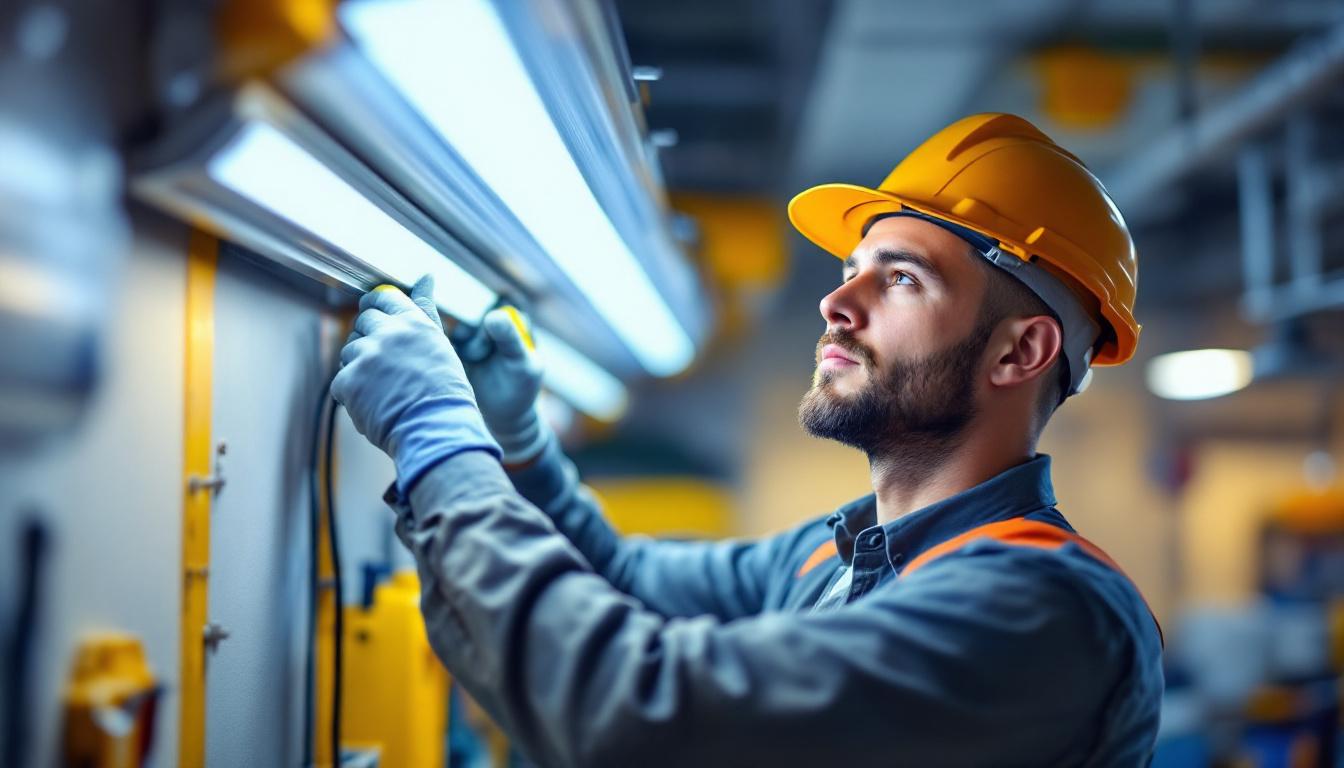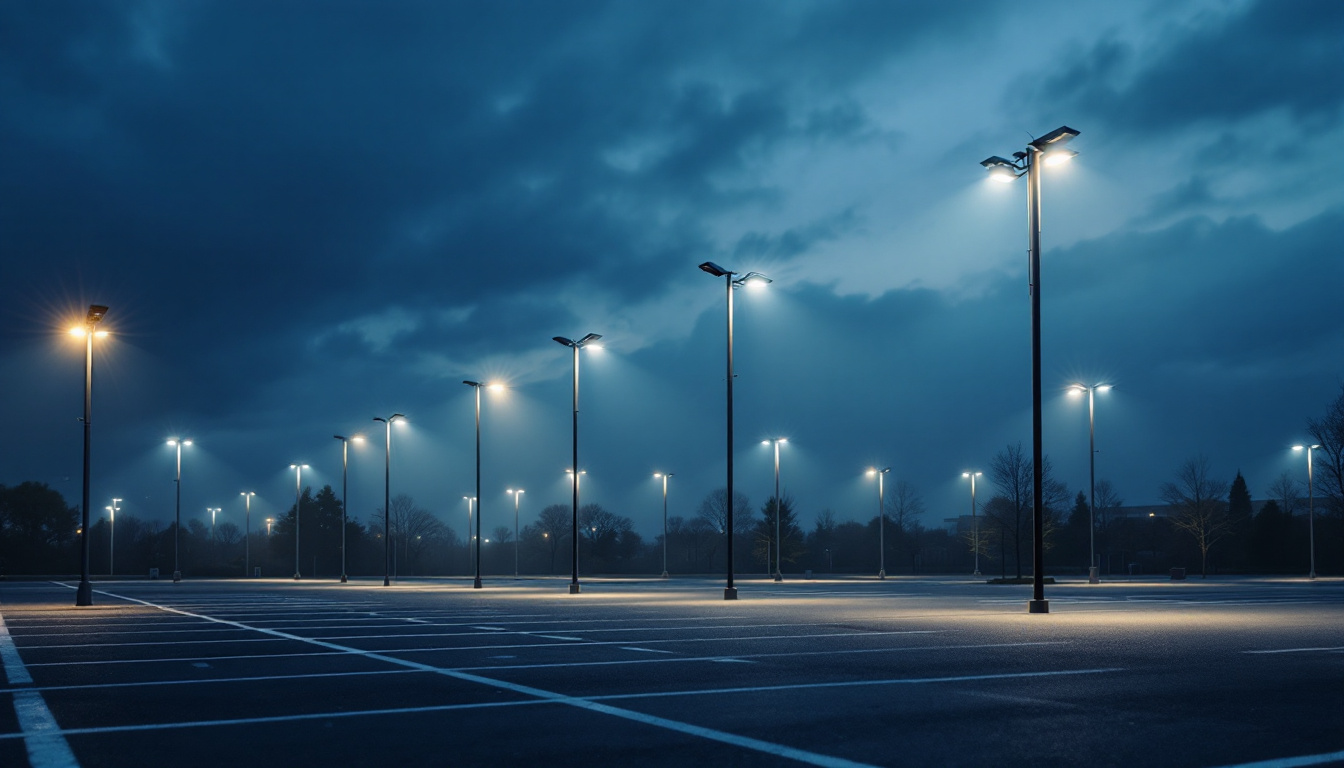
In recent years, the lighting industry has witnessed a significant transformation with the advent of LED technology. Lighting contractors are increasingly adopting LED light bulbs for fluorescent fixtures, a shift that is revolutionizing the way they approach their projects. The benefits of this transition are numerous, ranging from energy efficiency to enhanced durability, making it an attractive option for both contractors and their clients.
Fluorescent fixtures have long been a staple in commercial and industrial lighting, but the limitations of traditional fluorescent bulbs have prompted the search for better alternatives. LED light bulbs designed for these fixtures not only address the shortcomings of fluorescent lighting but also offer a host of advantages that can streamline the work of lighting contractors.
One of the most compelling benefits of LED technology is its remarkable energy efficiency. LED bulbs consume significantly less power than their fluorescent counterparts, which translates into lower energy bills for businesses. This efficiency not only reduces operational costs but also contributes to a smaller carbon footprint, making it an environmentally friendly choice. Additionally, the longer lifespan of LED bulbs—often exceeding 25,000 hours—means that contractors can reduce the frequency of replacements, leading to less waste and lower maintenance costs over time.
Moreover, the versatility of LED technology allows for a wide range of color temperatures and brightness levels, enabling contractors to customize lighting solutions to meet specific client needs. Whether it’s creating a warm, inviting atmosphere in a retail space or providing bright, focused lighting in a warehouse, LED bulbs can easily adapt to various applications. This flexibility not only enhances the aesthetic appeal of a space but also improves functionality, making it easier for businesses to achieve their desired ambiance and operational efficiency.
One of the most compelling reasons for lighting contractors to consider LED light bulbs is their energy efficiency. LEDs consume significantly less power than fluorescent bulbs, which translates to lower electricity bills for clients. This efficiency is particularly important in large commercial spaces where lighting can account for a substantial portion of energy costs.
Moreover, the reduced energy consumption of LEDs contributes to a lower carbon footprint, aligning with the growing emphasis on sustainability in the construction and renovation sectors. For contractors, promoting energy-efficient solutions not only enhances their reputation but also meets the increasing demand for eco-friendly practices.
LED light bulbs are renowned for their impressive lifespan, often lasting up to 25,000 hours or more compared to the 7,000 to 15,000 hours typical of fluorescent bulbs. This longevity means less frequent replacements, which can save contractors time and money on maintenance and labor. Clients appreciate the reduced need for replacements, making LED solutions a more attractive option in the long run.
In addition to their extended lifespan, LEDs are also more durable. Unlike fluorescent bulbs, which can be fragile and prone to breakage, LEDs are solid-state lights that can withstand vibrations and impacts. This durability is especially beneficial in environments where fixtures may be subject to rough handling or challenging conditions.
Lighting quality is a crucial consideration for contractors, as it directly impacts the functionality and aesthetics of a space. LED light bulbs provide superior light quality with better color rendering capabilities. This means that colors appear more vibrant and true to life, which is particularly important in settings such as retail spaces, galleries, and offices.
Furthermore, LEDs offer a variety of color temperatures, allowing contractors to tailor the lighting to the specific needs of their clients. Whether a warm, inviting glow is desired for a restaurant or a cool, bright light is needed for a workspace, LEDs can meet those requirements with ease.
One of the primary concerns for lighting contractors when transitioning to LED light bulbs for fluorescent fixtures is compatibility. Fortunately, many LED options are designed to be direct replacements for traditional fluorescent bulbs, making installation straightforward. However, it is essential to assess the existing fixtures to ensure they are compatible with LED technology.
Some LED bulbs may require specific types of ballasts, while others are designed to operate without them. Contractors should familiarize themselves with the various options available to provide the best solutions for their clients. This knowledge not only enhances the contractor’s credibility but also ensures a smooth installation process.
While the initial cost of LED light bulbs may be higher than that of traditional fluorescent bulbs, the long-term savings on energy and maintenance can offset this investment. Contractors should be prepared to discuss the total cost of ownership with their clients, emphasizing the financial benefits that come with LED technology.
Additionally, many regions offer incentives or rebates for energy-efficient upgrades, which can further reduce the upfront costs for clients. Lighting contractors should stay informed about available programs to help their clients maximize their savings.
As the lighting industry evolves, so too must the skill set of lighting contractors. To effectively promote and install LED light bulbs for fluorescent fixtures, contractors may need additional training and education. This can include understanding the latest technologies, installation techniques, and energy efficiency standards.
Many manufacturers and industry organizations offer training programs and resources to help contractors stay current with advancements in LED technology. Investing in education not only enhances a contractor’s expertise but also positions them as a knowledgeable resource for clients.
In a recent project for a large retail chain, a lighting contractor replaced outdated fluorescent fixtures with LED light bulbs. The goal was to enhance the shopping experience while reducing energy costs. The result was a brighter, more inviting atmosphere that showcased products more effectively.
Not only did the retailer experience a significant drop in energy consumption, but customer feedback was overwhelmingly positive. Shoppers noted that the improved lighting made it easier to see products, leading to increased sales. This project exemplifies how LED technology can transform retail spaces while providing tangible benefits to both contractors and clients.
Another successful case involved an industrial facility that sought to upgrade its lighting system. The existing fluorescent fixtures were inefficient and required frequent maintenance, leading to downtime and increased operational costs. By switching to LED light bulbs, the facility was able to enhance visibility and safety while significantly reducing energy expenses.
The transition not only improved the working conditions for employees but also demonstrated the facility’s commitment to sustainability. The contractor involved in this project was able to showcase their expertise in LED technology, leading to further opportunities in similar industrial projects.
Despite the numerous benefits of LED light bulbs, some clients may still have reservations about making the switch from fluorescent fixtures. Common concerns include the initial investment, perceived quality of light, and the reliability of new technology. Lighting contractors play a crucial role in addressing these concerns through education and transparent communication.
Providing clients with data on energy savings, maintenance costs, and case studies can help alleviate fears and demonstrate the long-term value of LED solutions. Additionally, offering trial installations or demonstrations can allow clients to experience the benefits firsthand before committing to a full upgrade.
The rapid pace of technological advancements in the lighting industry can pose a challenge for contractors. New products and innovations are constantly emerging, making it essential for contractors to stay informed and adaptable. Engaging in continuous education and networking with industry professionals can help contractors remain competitive.
Participating in trade shows, webinars, and industry forums can provide valuable insights into upcoming trends and technologies. By staying ahead of the curve, contractors can position themselves as leaders in the field and offer clients the most current and effective lighting solutions.
The trend towards LED lighting is not expected to slow down anytime soon. As more contractors recognize the benefits of LED light bulbs for fluorescent fixtures, the demand for these products will continue to rise. This growth presents an opportunity for contractors to expand their service offerings and tap into new markets.
Additionally, as energy efficiency regulations become more stringent, the transition to LED lighting will likely become a necessity rather than a choice. Contractors who embrace this shift early on will be well-positioned to thrive in an evolving industry landscape.
As technology continues to advance, new innovations in LED lighting are expected to emerge. From smart lighting solutions that integrate with building management systems to advancements in color tuning and dimming capabilities, the future of LED lighting is bright.
Contractors who stay informed about these innovations will be able to offer cutting-edge solutions that meet the evolving needs of their clients. Embracing new technologies can enhance a contractor’s reputation and lead to new business opportunities.
The transition to LED light bulbs for fluorescent fixtures is transforming the way lighting contractors work. With benefits such as energy efficiency, longevity, and improved light quality, LED technology is not just a trend but a fundamental shift in the industry. By understanding the advantages, addressing client concerns, and staying informed about advancements, contractors can position themselves for success in this dynamic landscape.
As the demand for sustainable and efficient lighting solutions continues to grow, contractors who embrace LED technology will be at the forefront of the industry. This transformation not only enhances the contractor’s service offerings but also contributes to a more sustainable future for all.
Ready to lead the charge in the LED revolution and elevate your lighting projects? LumenWholesale is your trusted partner, offering an exceptional range of high-quality, spec-grade LED lighting products at unbeatable wholesale prices. Say goodbye to local distributor markups and hello to superior lighting solutions that meet the highest industry standards. With free shipping on bulk orders, you can stock up on premium lighting without any hidden fees or compromises. Take the first step towards a brighter, more sustainable future and discover the best value in wholesale lighting today with LumenWholesale.

Discover everything lighting contractors need to know about parking lot poles and lights in this comprehensive guide.

Discover essential compliance guidelines and expert insights for lighting contractors in our comprehensive guide to outdoor posts for lights.

Discover why purchasing industrial ceiling fans in bulk from local distributors might not be the best choice.

Discover the transformative impact of hallway floor lighting in modern design.